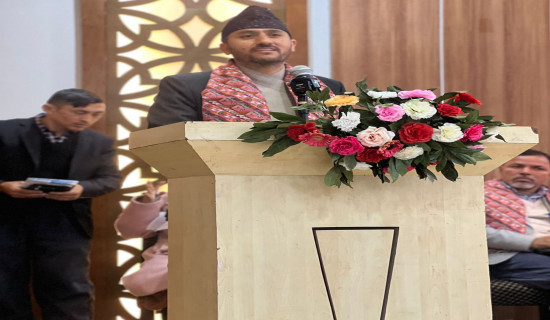- Wednesday, 24 December 2025
Ensure Road Safety
Bini Dahal
Recently, Nepal saw two dreadful bus accidents unfolding in Simaltar of Chitwan. A sudden landslide in the area had caused the two buses to fall right into the flooded Trishuli River. Several vehicular mishaps have occurred in several other parts of the country, too. The rising number of bus accidents during the monsoon season reflects the country’s subpar physical infrastructures. Haphazard opening of tracks is responsible, to some extent, for disasters and floods and landslides in many areas. Apparently, more than five dozen people lost their lives in those two road disasters. Despite efforts being made by search and rescue teams, only few bodies have so far been recovered from the river. However, three passengers were lucky enough to save their lives by swimming. Family members have gathered around with the hope of sighting their loved ones. This is really a traumatic situation.
Finding the survivors is difficult at this point of time and the authorities are putting their efforts into recovering the deceased bodies. Nepal’s Ministry of Home Affairs has continued to seek supporting technologies from India to expedite the rescue process. Last year, the country had to seek support from Bangladesh. Such technologies are helpful to track dead bodies or their possible remains from the river. Also, following the landslide, the government has come up with new measures. It has mainly put a ban on the operation of buses at night. Because road accidents are mostly found taking place in the nighttime, such efforts can help reduce casualties significantly. But the bus operators are of the view that the government should put its efforts into improving the road infrastructure over banning the buses at night.
The Narayanghat-Mugling road section has always been considered unsafe. The government also plans to set up warning signs so as to indicate that the region is going through floods and landslides. But these are just preventive or curative measures. As long as the focus is not put on improving road infrastructures, we will continue to face the wrath of such accidents. Another important point is about rescue. In spite of frequent road accidents, rescue operations do not seem to be timely and effective. They appear to be in operation on an ad hoc basis. The concerned authorities do not have the required technology to carry out any big rescue operations. The rescue teams are also in need of rigorous training so as to enable them to cope with such situations. This is the reason why we are more dependent on the foreign countries whenever we are in any trouble. Such dependency delays the existing rescue efforts and causes issues of increased casualties.
While it is essential for vehicle owners, drivers and passengers to take necessary precautions, the government must enhance its road standards and monitor the speed of vehicles. Because it has become a repeated incident now, it is time the government identifies the core problems and core solutions to it. Amidst growing climate change events in the country, such accidents will continue to happen in the future as well. The only way is to plan for and construct resilient and sustainable infrastructures. Doing so can significantly reduce the number of human casualties and the potential cost the country has to incur through natural disaster induced accidents. As a vulnerable nation, Nepal still has a long way to go when it comes to road safety.

















